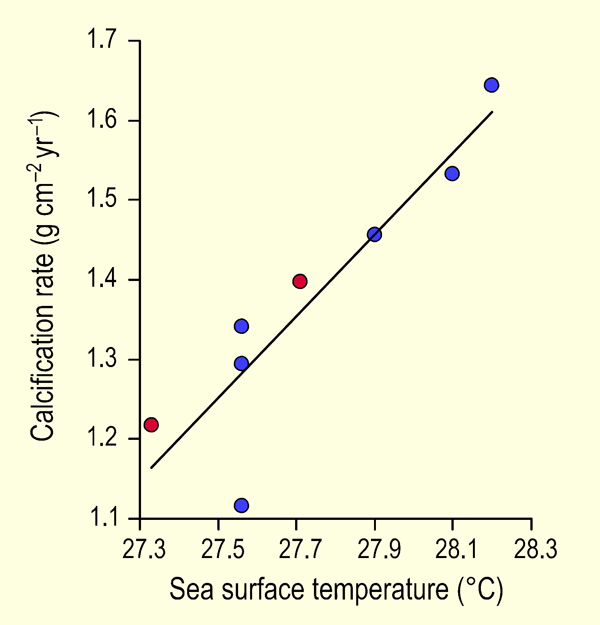Reference
Carricart-Ganivet, J.P. and Gonzalez-Diaz, P. 2009. Growth characteristics of skeletons of Montastraea annularis (Cnidaria: Scleractinia) from the northwest coast of Cuba. Ciencias Marinas 35: 237-243.
Background
Climate alarmists continue to contend that rising temperatures are harmful to earth's corals, and that in concert with ocean acidification (caused by rising atmospheric CO2 concentrations) they are gradually reducing their rates of calcification. But is this really so?
What was done
Working at two reef sites on the northwest coast of Cuba -- one in the Guanahacabibes Gulf just off the Pinar del Rio Province and the other north of Havana Bay -- the authors measured yearly coral extension rates and densities of the dominant Caribbean reef-building coral Montastraea annularis for the period 1991 to 2003, from which data they calculated annual coral calcification rates. They then plotted their results against mean annual sea surface temperature (SST, obtained from the UK's Hadley Centre) and compared their results with those of Carricart-Ganivet (2004), who had developed a similar relationship between coral calcification rate and annual average SST based on data collected from colonies of the same coral species at several localities in the Gulf of Mexico and the Caribbean Sea.
What was learned
The results of the two investigations are presented in the figure below, where it can be seen that they are totally compatible with each other.

Figure 1. Mean yearly calcification rate of Montastraea annularis vs. mean annual sea surface temperature for the several sites studied by Carricart-Ganivet (2004) (blue circles) and the two sites studied by the authors (red circles). The line that has been fit to the data is described by: Calcification Rate = 0.51 SST - 12.85 (r2 = 0.82, p < 0.002). Adapted from Carricart-Ganivet and Gonzalez-Diaz (2009).
In addition, we note that when Carricart-Ganivet (2004) had earlier pooled his data with those of M. annularis and M. faveolata growing at Carrie Bow Cay, Belize, those from reefs at St. Croix in the US Virgin Islands, and those of M. faveolata at Curacao, Antilles, he also obtained a mean increase in calcification rate of ~0.5 g cm-2 year-1 for each 1°C increase in annual average SST.
What it means
In spite of all of the bad-mouthing of CO2-induced global warming and ocean acidification by the world's climate alarmists, the dominant reef-building corals of the tropical Atlantic Ocean seem not only to do fine, but actually to do better, whenever the waters within which they grow periodically warm.
Reference
Carricart-Ganivet, J.P. 2004. Sea surface temperature and the growth of the West Atlantic reef-building coral Montastraea annularis. Journal of Experimental Marine Biology and Ecology 302: 249-260.




